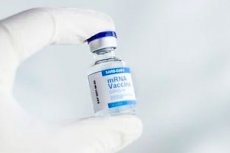New publications
Why are lymph nodes enlarged after administration of the anticoronavirus vaccine?
Last reviewed: 02.07.2025

All iLive content is medically reviewed or fact checked to ensure as much factual accuracy as possible.
We have strict sourcing guidelines and only link to reputable media sites, academic research institutions and, whenever possible, medically peer reviewed studies. Note that the numbers in parentheses ([1], [2], etc.) are clickable links to these studies.
If you feel that any of our content is inaccurate, out-of-date, or otherwise questionable, please select it and press Ctrl + Enter.

Enlarged axillary lymph nodes are a common symptom that occurs after vaccination against coronavirus infection. Experts point out that this consequence is not a complication, but should be perceived as a variant of the normal course of the process (provided that the patient does not have any other pathological changes in the mammary glands). Similar medical recommendations were published in the well-known American Journal of Radiologists AJR.
A team of scientists from the University of California, Los Angeles, carefully examined digital medical records of patients who had recently received the Moderna and Pfizer/BioNTech coronavirus vaccines. All women underwent mammological diagnostics during the experimental period, during which the size, configuration and density of the axillary lymph nodes were determined. In addition, ultrasound and magnetic resonance imaging were performed.
As a result of the experiment, enlarged axillary lymph nodes were detected in more than 20 women of different age categories – from 28 to 70 years. Experts note that lymphadenopathy was detected ipsilaterally from the vaccination side. At the same time, 13% of patients complained of discomfort in the axillary area and mammary gland (pulling pain, feeling of pressure and tissue compaction). And the rest of the women did not have any unpleasant symptoms: they learned about lymphadenopathy only during diagnostics or control studies.
The time interval between the administration of the first dose of the anti-coronavirus vaccine and the detection of enlarged lymph nodes was several days (on average, from two days to four weeks). Most women (more than half of them) had only one pathologically enlarged lymph node.
Following the examination of the mammary glands, the specialists used the description of the detected changes and their assessment using the Bi-RADS system (mammary gland diagnostic interpretation and reporting system). One patient was assigned to the Bi-RADS 2 category (only benign changes were detected), 21 women were assigned to the Bi-RADS 3 category (changes were predominantly benign with a recommendation for a repeat examination within 4-24 weeks). One woman was assigned the Bi-RADS 4 category (suspected malignancy), while her medical history indicated that she had previously suffered from breast cancer. As a result of the biopsy, this patient was diagnosed with a reactive form of lymphoid hyperplasia.
Experts explain: an increase in axillary lymph nodes on the side where the vaccine was administered, against the background of the absence of other pathological changes in the mammary glands, can be described as a temporary response of the body. It is important that this reaction is correctly interpreted by the doctor, because in this case, the appointment of a biopsy would be unfounded.
Original source of information: AJR Journal of Radiology
